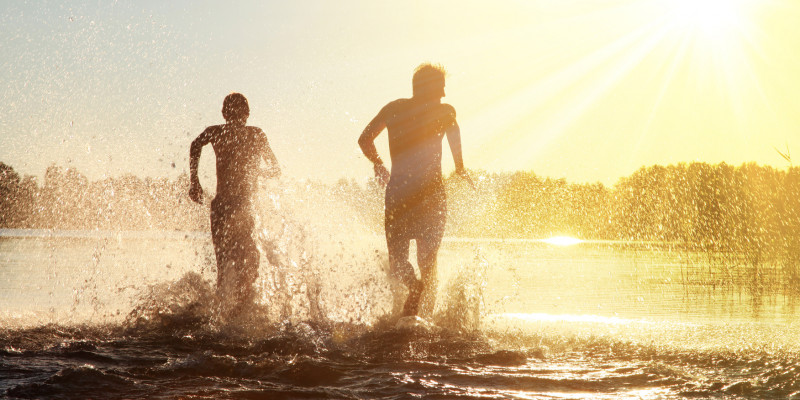The Commission rated only six bathing waters in Germany 'poor' for the 2018 season. 74 sites were closed either temporarily or entirely, 45 of which because of problems with cyanobacteria. The reasons for longer-term closures were usually remediation measures or a lack of operator. Only seven sites were closed temporarily due to poor hygienic quality of water.
The latest data on bathing water quality is available online on the webpages of the individual federal states. For an overview go to www.uba.de/wasserqualitaet-in-badegewaessern.
Problems with cyanobacteria (blue-green algae)
Due to the hot summer of 2018 a few federal states experienced considerable problems with cyanobacteria. This is why 45 bathing sites had to be temporarily closed. Massive growth of cyanobacteria – also known as algal bloom – can be seen when water turns blue-green or develops green streaks on the water surface. The simple test to determine whether it is still safe to go swimming or not: if you cannot see your feet when standing knee-deep in the water, there is probably too much cyanobacteria in the water. In the case of an algal bloom outbreak small children at the crawling stage should not play on the beach since they can easily swallow a significant amount of sand or water contaminated with cyanobacteria.
What is tested?
Bathing waters are used by many more purposes than only bathing, which is why there is a potential for their pollution, for example from wastewater input or run-off from agricultural land. Therefore, the competent authorities in the federal states test the hygienic water quality at regular intervals. The European Bathing Water Directive defines how testing must be done. To protect bathers from infectious disease two microbiological parameters are taken as indicators of pathogens: Escherichia coli and intestinal enterococci (bacteria).
Tests were carried out at 2,289 German bathing sites in the 2018 bathing season, with 13,371 water samples taken and evaluated. 366 of the bathing sites are along the coasts of the North and Baltic Seas, 1,923 are inland.
Water quality has greatly improved since water monitoring started in 1976. Poor quality was still recorded at 10-15 percent of bathing water sites in the 1990s, compared to only 0.3% in 2018.
 Click to enlarge
Click to enlarge




修改评论